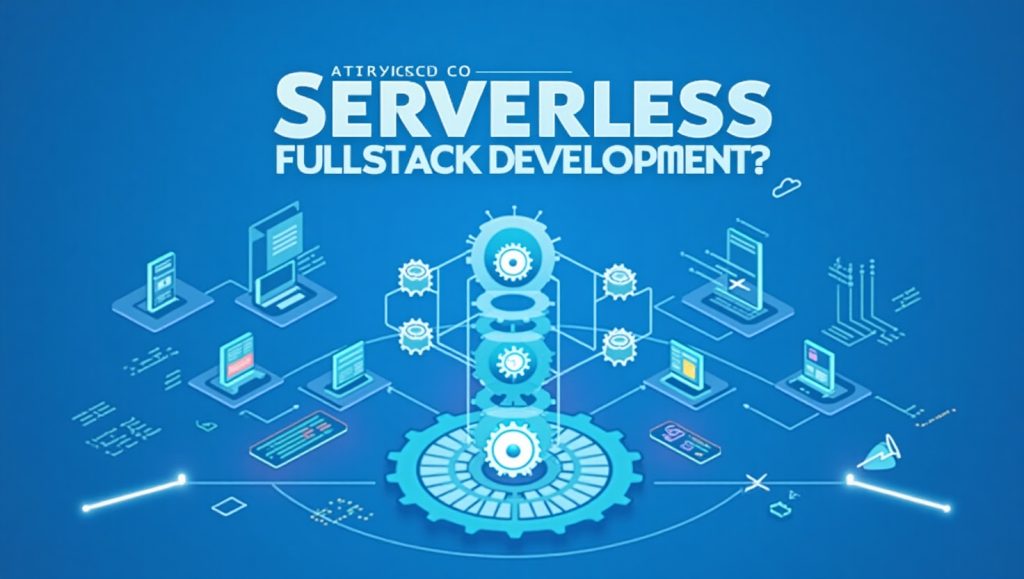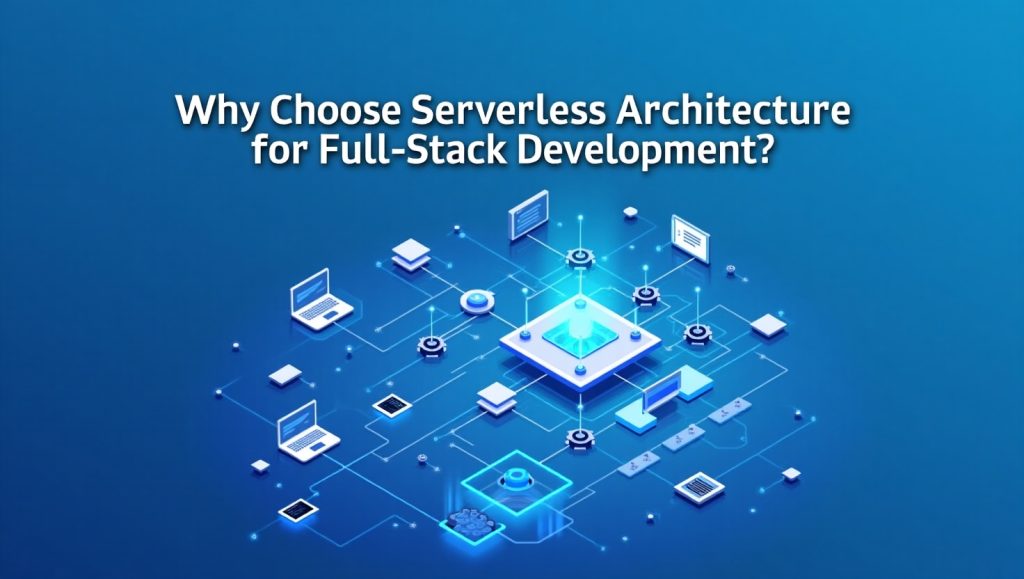
Developer(s) are increasingly drawn towards serverless architecture, particularly its full-stack advantages of flexibility, less overhead, and cost effective. But in 2025, why is serverless trending this way, and why is it a good solution for developers?
To address this we will explore the benefits, challenges, and real-life applications of serverless for your next web built. From a startup developing a lean MVP to a digital agency scaling platforms for clients, serverless can offer the greatest paths forward. Let us enumerate why it is worth considering.
Faster Deployment and Reduced Maintenance
One of the primary benefits of serverless architecture is the speed with which you can go from idea to deployment. In a server-based development environment, you often have to set up, manage, and upgrade the server — actions which chip away at your development time.
No Infrastructure Setup or Server Management
With serverless technologies, there’s no need to manually configure a backend environment. Developers are relieved from the burden of provisioning virtual machines or configuring load balancers. Instead, they can deploy their code in small snippets using a function as a service in one of the cloud providers (AWS Lambda, Google Cloud Functions, Azure Functions, etc.). Functions scale automatically and only run when invoked, which makes maintenance a lot easier. Full-stack developers can dedicate their time thinking about features and user experience rather than infrastructure concerns.
Take, for example, an eCommerce website. Rather than hosting and managing a server to process orders, you could create a function that only runs if a new order is placed. Not only is this faster during development, but it is also a lot easier to debug when developers are only working with a small codebase.
Scalability Without the Stress
One of the most powerful features of serverless is its ability to automatically scale with your user base. You don’t need to monitor server loads or purchase more capacity when your app goes viral — the cloud provider handles that.
Automatic Scaling With Global Reach
With traditional hosting, you’re in trouble with downtime if your user base spikes unless you planned ahead and paid for extra server resources. Serverless architectures scale each function individually and track usage in real time.
For example, if you’re building a news app or designing a custom dashboard like website design Swansea projects — you want your content to appear immediately for all users everywhere. With serverless, each function request is managed globally and individually, so the experience is instantaneous without pre-planning for traffic spikes.
This capability is especially relevant when deploying microservices or combining the use of third-party integrations that may cause usage spikes you can’t predict. Plus, it’s great for the user experience because it means reduced latency and better availability regardless of where users are located.
Cost-Effectiveness and Pay-As-You-Go Pricing
Serverless platforms operate on a pay-per-use model. This is a major shift from traditional hosting or cloud-based virtual machines that charge by the hour or require pre-paid instances.
You Pay Only for What You Use

In the majority of serverless environments, you are charged for function invocations and compute time, and not for hours that the server sits idle. This is a win-win for any startup or someone working on a low-traffic app, MVP, or seasonal promotional campaign.
Imagine you are about to launch a product demo site. With serverless, while the server is idle you are not charged; should you need a demo product, it is readily available. The cost limitations for startups to build a great product will really help in the budget department!
Another plus for serverless is that your team / you don’t need to over-provision resources. Failover, backups and monitoring are all handled by the cloud provider too, therefore the need for large ops teams is lessened.
From the business side, this makes full stack development on serverless a more financially prudent route – and especially when the solution is combined with JAMstack architectural specifications or headless content management systems that are also designed for scalability and performance.
Enhanced Security and Built-in Features
Security remains a top priority in any tech stack. While no architecture is 100% risk-free, serverless offers some built-in protections that traditional environments lack.
Isolation and Automatic Patching
Each function inside serverless is sandboxed. If one function is compromised, it doesn’t mean the whole system is compromised as well. While the provider also frequently patch & update the underlying services, they have a responsibility to reduce the threat surface.
Let’s take the example of a site that is collecting sensitive form data — which is common for web design Penarth or marketing sites — and you want the data to be handled securely. serverless ensures TLS is applied by default and that functions run in an protected, isolated environment.
Additionally, through role based access, IAM policies, and platform specific data encryption features provided by cloud services like AWS, security is o significantly easier to deal with. Developers are no longer spending hours configuring firewall, intrusion detection systems, or applying OS patches – or even worrying about them to begin with!
For small teams or solo developers, this has a massive impact on risk, work and stress.
Perfect Fit for Modern Web Projects
Today’s websites and applications are API-driven, mobile-first, and microservice-oriented. Serverless complements these trends by enabling flexible, lightweight, and decoupled system designs.
Better Integration With Front-End Frameworks
If you are developing with frameworks like React, Vue, or Next.js (popular for full-stack), serverless functions are easily integrated. You can create rich backends without dealing with complex routing or monolithic logic.
Each API endpoint could be a separate function, that can call out to a service (like Firebase, Stripe, or use a headless CMS). This simple design enables you to scale, test, and deploy independently on features for improved extensibility and collaboration.
If we take a job board project for example, you can create serverless endpoints for posting jobs, applying to a job and having admin approval — all as separate functions. This allows you to change or update things quickly and iterate without worry of affecting other services in the backend.
You can also be flexible in your choice of database, caches, or messaging services. This is what makes serverless a perfect partner for cloud-native solutions.
Challenges and Considerations Before Going Serverless
While serverless offers numerous benefits, it’s not a one-size-fits-all solution. Like any technology, it comes with its own set of trade-offs.
Cold Starts and Vendor Lock-In
Serverless functions can suffer from “cold starts,” especially in environments like AWS Lambda. This is the slight delay when a function is triggered after being idle. While modern improvements have reduced this issue, it’s something performance-sensitive apps must consider.
Additionally, each cloud provider has unique implementations, so you may face vendor lock-in. Once you build and optimize for AWS Lambda, moving to Google Cloud Functions may require rewriting code and configurations.
Still, these challenges can be mitigated. Developers often use tools like the Serverless Framework or Terraform to abstract and manage functions across platforms. This helps with portability and workflow automation.
It’s also important to test thoroughly, monitor function usage, and set up proper logging and alerting — all part of good full-stack development practices.
Conclusion
Serverless architecture is not just a new trend anymore – it is a functional and proven way of working. Serverless provides speed, flexibility, and cost-savings. For most teams building agile, modern, and performant applications, serverless architecture will be the best option.
Whether you’re building an eCommerce system (or other complex system), a SaaS product, or an internal business tool, serverless architecture can let you work quickly and focus on delivery while keeping your costs down and complexity low.
Much like how selecting the proper CMS system or styling choices can influence how a website development company in Swansea deliver a site, specifying the correct architectural choices will describe how well the end-product performs and how sustainable it will be in the future.
If you’re exploring microservices, headless systems, or JAMstack workflows, then serverless architecture is a natural evolution and will fit along with current trends in web application development.